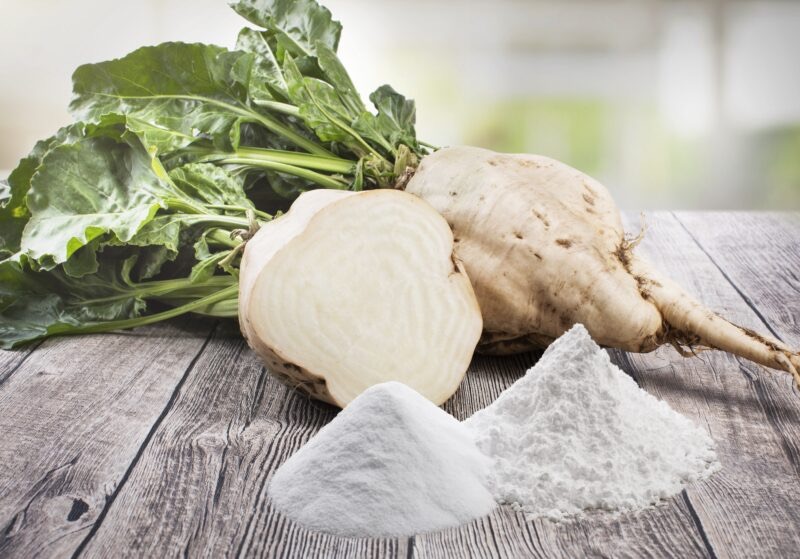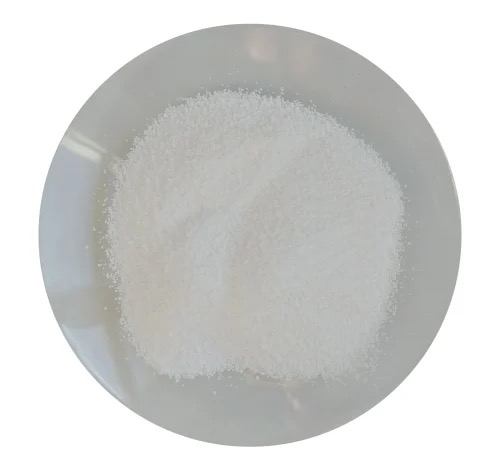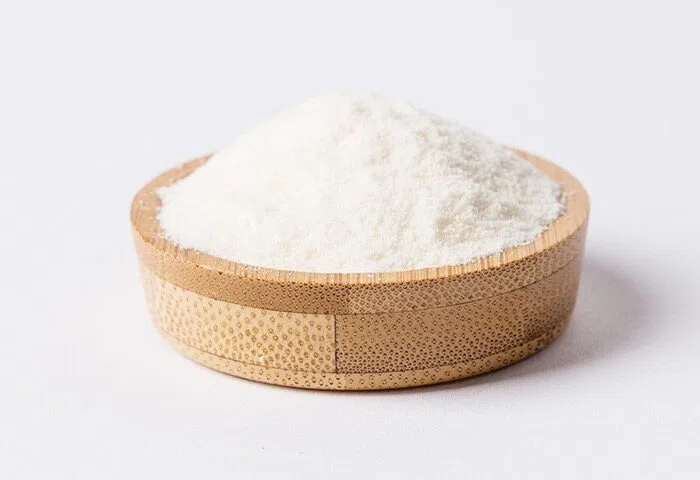Views: 222 Author: Sara Publish Time: 2025-10-29 Origin: Site








Content Menu
● Vietnam as a Hub for Isomaltulose
● Isomaltulose Manufacturers and Suppliers in Vietnam: A Structured View
● Formulation and Applications
● Quality, Compliance, and Sustainability
● Case Studies and Capabilities
● FAQ
>> 1. What are the primary benefits of isomaltulose as a sweetener?
>> 2. In what formats is isomaltulose available for manufacturing?
>> 3. How can blended-sweetener development help overseas manufacturers?
>> 4. What role do OEM/ODM services play in isomaltulose projects?
>> 5. How is quality and regulatory compliance ensured?
Vietnam has emerged as a strategic hub for high-quality sweetener supply chains in the food, beverage, and health-care sectors. Isomaltulose—an energy-fulfilling, low-glycemic, slow-dissolving sugar substitute—fits the growing demand for healthier indulgence without compromising taste, texture, or stability. For overseas manufacturers seeking reliable sourcing, formulation support, and turnkey production capabilities, partnerships with reputable Isomaltulose Manufacturers and Suppliers in Vietnam offer a compelling path from raw material procurement to finished products and packaging. The focus of this article is on demonstrating how a China-based factory with expertise in natural sweeteners, functional polyols, and dietary fiber can act as an efficient bridge between Vietnamese suppliers and global brands, delivering blended-sweetener development, tablet production, and comprehensive OEM/ODM services. The discussion emphasizes practical formulation strategies, quality control, regulatory alignment, and sustainable practices, all framed within the context of today's global market for isomaltulose.

Isomaltulose is a disaccharide carbohydrate produced from sucrose that has a different glycosidic linkage, resulting in slower hydrolysis and a lower glycemic response. The advantages of isomaltulose include:
- Lower glycemic index compared with sucrose, enabling health-conscious product development in beverages, dairy, baked goods, and nutrition bars.
- Stable sweetness over a wide range of processing temperatures, which is valuable for hot-fill and pasteurization processes.
- Clean-tasting sweetness with good mouthfeel, enabling reduced incorporation of alternative sweeteners without sacrificing flavor.
- Compatibility with clean-label formulations and label-friendly positioning, when paired with natural ingredients and dietary fibers.
Regulatory considerations commonly involve adherence to GMP, ISO, HACCP, and country-specific food-safety standards. Companies often pursue third-party certifications to reassure customers and regulators about quality and safety. These attributes make isomaltulose a favored ingredient among global brands seeking healthier sugar alternatives and reliable supply chains.
Vietnam's growing role in the regional supply chain is driven by:
- Access to robust manufacturing ecosystems and logistics networks, enabling efficient export to North America, Europe, and Asia-Pacific markets.
- Proximity to raw materials and complementary ingredients used in blended sweeteners and functional polyol systems.
- The ability to offer turnkey solutions—ranging from ingredient sourcing to finished products with OEM/ODM capabilities—through cross-border collaboration with manufacturers in nearby regions.
As such, Vietnam-based suppliers and international buyers increasingly value end-to-end support, traceability, and rapid scale-up capabilities. The presence of blending expertise, tablet production know-how, and customization services enhances the value proposition for overseas manufacturers seeking to optimize formulation, cost, and time-to-market.
The Vietnamese landscape includes several players with strengths in isomaltulose and related products. When evaluating partners, key considerations include:
- Core capabilities: ability to provide blends, turnkey solutions, and tablet/formulation capabilities.
- Product formats: powder, syrup, granules, and other customized forms.
- Quality certifications: GMP, ISO, HACCP, and other third-party attestations.
- OEM/ODM versus pure ingredient supply: the degree of customization, packaging options, and regulatory support.
- Technical support and collaboration: access to R&D resources, sensory testing, stability studies, and scale-up expertise.
This article emphasizes a practical framework for selecting a partner who can deliver end-to-end support—from formulation and blending to final manufacturing and international distribution—while leveraging the strengths of a cross-border supply chain.

Isomaltulose is valued for its performance across multiple product categories:
- Beverages: low GI sweetness with stable sweetness release during shelf life and storage, enabling formulations for sports drinks, ready-to-drink teas, and flavored waters.
- Dairy: smooth sweetness and compatibility with dairy matrices, enabling reduced-sugar yogurts, milk drinks, and fortified beverages.
- Bakery and cereals: suitable for products requiring sustained sweetness and moisture retention, with potential improvements in crumb softness and mouthfeel.
- Health foods and nutrition bars: supports clean-label positioning when combined with dietary fibers and natural flavor systems.
Practical formulation considerations include: selecting suitable blend ratios with natural sweeteners and dietary fibers to achieve target sweetness and mouthfeel while controlling calories and GI impact; optimizing dissolution rates in cold or hot beverages; and ensuring stability during thermal processing and storage. Your blended-sweetener development expertise enables customization for regional taste preferences, label declarations, and regulatory compliance across markets.
A robust quality management approach is essential for isomaltulose-based products:
- Supplier qualification and audits to ensure consistent raw material quality and traceability.
- In-process QC checks and finished-product testing for key parameters such as sugar composition, moisture, particle size, and microbial safety.
- Documentation and regulatory readiness, including ingredient declarations, allergen controls, and country-specific labeling requirements.
- Sustainability practices, including responsible sourcing, efficient manufacturing processes, and waste reduction initiatives, align with cleaner-label trends and corporate social responsibility goals.
Illustrative case studies demonstrate how blended sweetener systems can meet diverse market needs:
- Example A: A ready-to-drink sports beverage company seeking a low-GI formulation. The project involved a tailored blend of isomaltulose with natural polyols and fibers to achieve the desired sweetness curve, mouthfeel, and labeling clarity, supported by pilot testing and scale-up for commercial production.
- Example B: A dairy-based product line requiring stable sweetness during pasteurization. The formulation employed isomaltulose with compatible dairy ingredients and packaging considerations to maintain flavor integrity and shelf stability.
- Example C: A baked-good line seeking clean-label sugar reduction without compromising texture. A customized blend strategy balanced sweetness, moisture retention, and crumb structure while aligning with claims such as "no added sugar" or "reduced sugar."
To engage, overseas manufacturers typically follow a structured collaboration pathway:
- Initial consultation to understand product goals, target markets, and regulatory constraints.
- Technical feasibility assessment and formulation workshop to determine blending ratios and processing requirements.
- Pilot blends, sensory and stability testing, and refinement of the formulation.
- Scale-up planning and contract manufacturing, including packaging, labeling, and logistics solutions.
- Regulatory clearance and post-launch support, ensuring ongoing compliance and quality maintenance.
Isomaltulose stands out as a versatile, health-conscious sweetener with strong potential across beverages, dairy, bakery, and health foods. Vietnam's growing ecosystem, combined with a China-based factory's capabilities in blended sweeteners, functional polyols, and dietary fiber, offers overseas manufacturers a robust, end-to-end solution. By selecting a partner with deep formulation expertise, comprehensive OEM/ODM capabilities, and strict quality control, international brands can achieve consistent product quality, scalable production, and efficient time-to-market. This integrated approach—rooted in Isomaltulose Manufacturers and Suppliers in Vietnam—facilitates dependable supply chains, transparent collaboration, and sustainable growth for health-focused products.

Isomaltulose provides a lower glycemic response, stable sweetness, and good mouthfeel, making it suitable for health-focused beverages, dairy, and nutrition products while supporting clean-label strategies.
Common formats include powder and syrup; other customized formats may be produced through OEM/ODM arrangements, enabling packaging flexibility and product differentiation.
Blended sweeteners optimize taste, texture, sugar management, and labeling, enabling formulation integrity across regional markets and aiding cost control for low-GI products.
OEM/ODM services cover end-to-end product development—from formulation and processing to packaging, regulatory compliance, and manufacturing scale-up—providing turnkey solutions for international brands.
A comprehensive QA/QC program includes supplier audits, batch testing, traceability, allergen controls, and adherence to international food-safety standards, with ongoing monitoring and documentation.
[1](https://pmc.ncbi.nlm.nih.gov/articles/PMC8322766/)
[2](https://pubs.rsc.org/en/content/articlelanding/2022/gc/d1gc04790f)
[3](https://www.linkedin.com/pulse/vietnam-isomaltulose-raw-material-market-strategy-g5bze)
[4](https://patents.google.com/patent/US9017745B2/en)
[5](https://www.beneo.com/news/sustainable-farming-beneo)
[6](https://www.credenceresearch.com/report/isomaltulose-market)
[7](https://www.databridgemarketresearch.com/reports/global-isomaltulose-market)
[8](http://lib3.dss.go.th/fulltext/scan_ebook/inter_sugar_1965_v67_n797.pdf)
